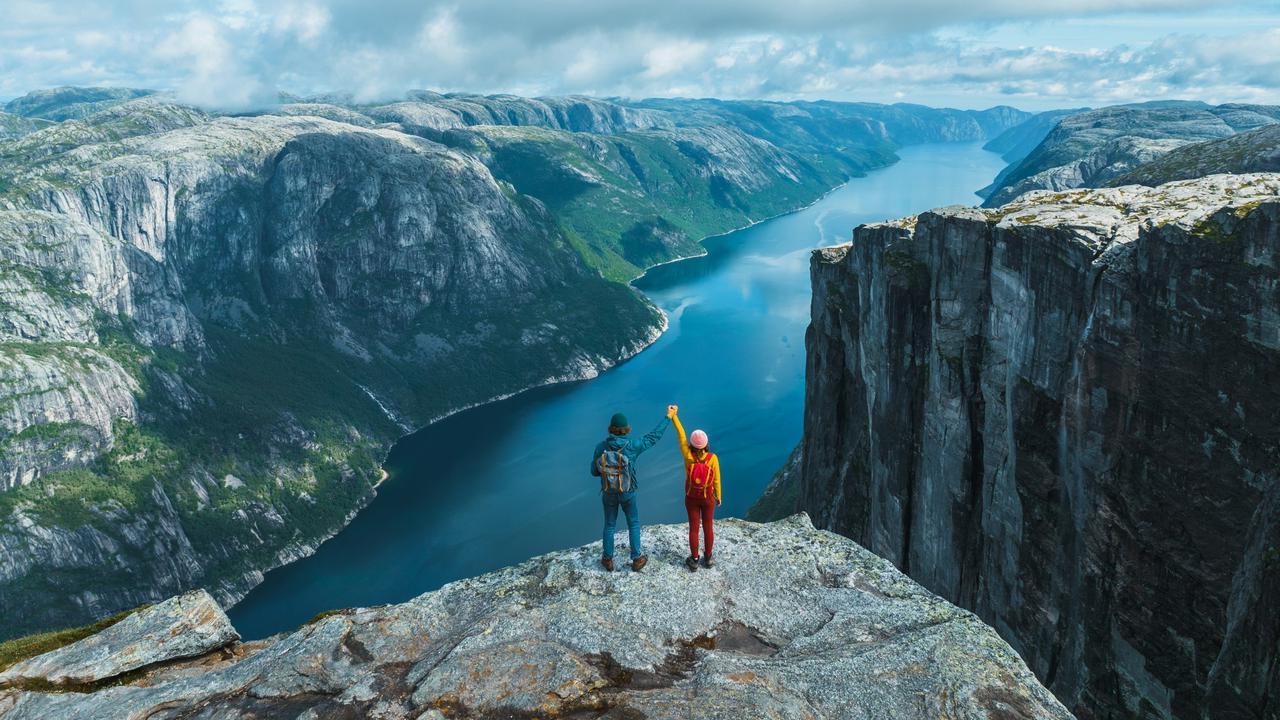
Fjords are some of the most stunning natural formations on Earth, but what exactly makes them so special? Fjords are long, narrow inlets with steep sides or cliffs, created by glaciers. These breathtaking landscapes can be found in countries like Norway, New Zealand, and Canada. But there's more to fjords than just their beauty. Did you know that some fjords are so deep they can hide entire skyscrapers underwater? Or that they play a crucial role in marine ecosystems? From their formation to their unique wildlife, fjords are full of surprises. Ready to dive into 27 fascinating facts about fjords? Let's get started!
Key Takeaways:
- Fjords are majestic, steep-sided inlets formed by glaciers. They are home to diverse wildlife and have been vital for human activities like fishing and tourism.
- Climate change and human activities pose threats to fjords. Conservation efforts are crucial to protect these unique environments for future generations.
What is a Fjord?
A fjord is a long, narrow inlet with steep sides or cliffs, created by a glacier. These natural wonders are found in various parts of the world and have unique characteristics.
- Fjords are formed by the process of glaciation. Glaciers carve out deep valleys, which are later filled by seawater.
- The word "fjord" comes from the Norwegian word "fjǫrðr," meaning "where one fares through."
- Norway is famous for its fjords, boasting over 1,000 of them.
- Sognefjord in Norway is the longest fjord in the world, stretching 205 kilometers (127 miles).
- Fjords can be found in other countries, including New Zealand, Canada, Chile, and Greenland.
Unique Features of Fjords
Fjords possess several unique features that distinguish them from other natural formations. These features make them fascinating to study and explore.
- Fjords often have very deep waters, sometimes reaching depths of over 1,300 meters (4,265 feet).
- The steep cliffs surrounding fjords can rise dramatically, sometimes over 1,000 meters (3,280 feet) above sea level.
- Many fjords have a shallow entrance called a "threshold," which can create strong tidal currents.
- Fjords often have multiple branches, creating a complex network of waterways.
- Some fjords have waterfalls cascading down their cliffs, adding to their scenic beauty.
Wildlife in Fjords
Fjords are home to a diverse range of wildlife, both above and below the water. This biodiversity makes them important ecosystems.
- Fjords provide habitat for various marine species, including fish, seals, and whales.
- The steep cliffs and surrounding forests are home to birds like eagles and puffins.
- Fjords' cold, nutrient-rich waters support a variety of plankton, which forms the base of the food chain.
- Some fjords have unique species that have adapted to the specific conditions of their environment.
- Fjords can serve as breeding grounds for certain species, providing a safe haven from predators.
Human Interaction with Fjords
Humans have interacted with fjords for centuries, using them for transportation, fishing, and tourism. These interactions have shaped the culture and economy of regions with fjords.
- Fjords have been used as natural harbors for ships, providing safe anchorage.
- Fishing has been a vital industry in fjord regions, with abundant fish stocks supporting local communities.
- Many fjords have small villages or towns along their shores, often relying on tourism.
- Fjords attract tourists for activities like hiking, kayaking, and sightseeing cruises.
- Some fjords have been designated as UNESCO World Heritage Sites due to their natural beauty and cultural significance.
Climate and Environmental Impact on Fjords
The climate and environmental conditions of fjords can vary widely, influencing their formation and the ecosystems they support. Understanding these factors is crucial for their preservation.
- Fjords are typically found in regions with cold climates, where glaciers can form and carve out valleys.
- Climate change poses a threat to fjords, as rising temperatures can lead to glacier retreat and changes in sea levels.
- Pollution and human activities can impact the delicate ecosystems of fjords, affecting water quality and wildlife.
- Conservation efforts are essential to protect fjords and their unique environments for future generations.
- Some fjords are experiencing increased tourism, which can put pressure on local resources and infrastructure.
Fun Facts about Fjords
Fjords are not only fascinating geological formations but also hold interesting trivia and lesser-known facts.
Final Glimpse at Fjords
Fjords are nature's masterpieces, carved by glaciers over millennia. These stunning waterways, found mainly in Norway, New Zealand, and Canada, offer breathtaking views and rich ecosystems. They support diverse marine life, from seals to orcas, and are home to unique plant species. Fjords also play a crucial role in local cultures and economies, attracting tourists and providing fishing opportunities.
Understanding fjords helps us appreciate their beauty and importance. They remind us of nature's power and the need to protect our environment. Whether you're an adventurer seeking new landscapes or a student of nature, fjords offer endless fascination.
So next time you see a picture of a fjord or visit one, remember the incredible forces that shaped it. Fjords are more than just scenic views; they're a testament to Earth's dynamic history.
Frequently Asked Questions
Was this page helpful?
Our commitment to delivering trustworthy and engaging content is at the heart of what we do. Each fact on our site is contributed by real users like you, bringing a wealth of diverse insights and information. To ensure the highest standards of accuracy and reliability, our dedicated editors meticulously review each submission. This process guarantees that the facts we share are not only fascinating but also credible. Trust in our commitment to quality and authenticity as you explore and learn with us.
